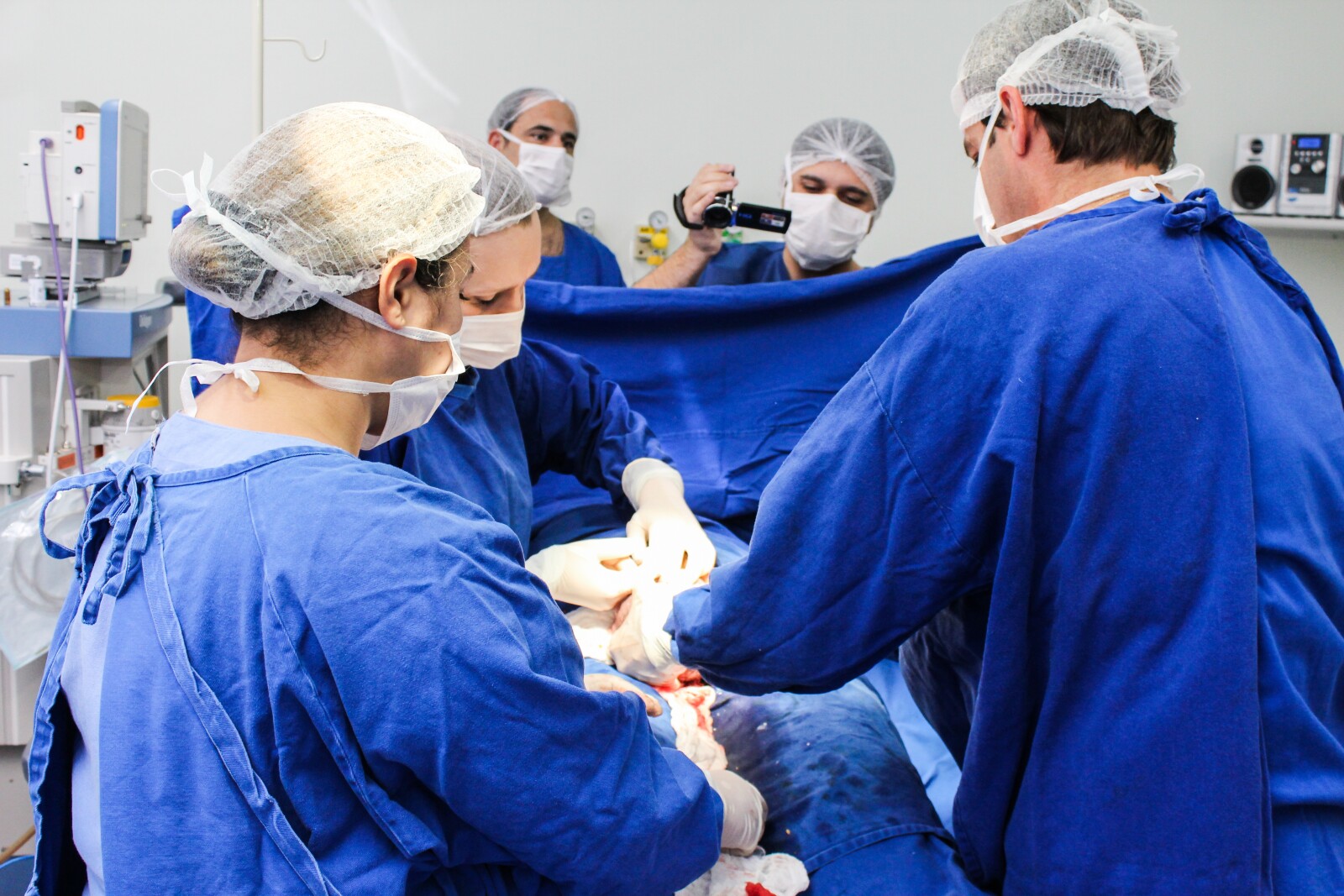Transvaginal Mesh
Like a double-edged sword, transvaginal mesh has been both a blessing and a curse in the medical field. Originally used for hernia repairs, its adaptation to treat Pelvic Organ Prolapse (POP) and Stress Urinary Incontinence (SUI) has sparked controversy due to high complication rates. This article delves into the complex history, regulatory responses, and varying perspectives surrounding transvaginal mesh, shedding light on its controversial standing in modern healthcare.

Key Takeaways
- Transvaginal mesh is used to treat stress urinary incontinence (SUI) and pelvic organ prolapse (POP).
- The FDA banned sales of mesh products for POP repair in 2019.
- Mesh surgeries for urinary incontinence and POP were performed in large numbers in the past.
- Mesh complications can include bleeding, infection, erosion, nerve damage, and organ perforation.
Understanding Transvaginal Mesh
Grasping the complexities of transvaginal mesh involves understanding its design, its applications in treating conditions like stress urinary incontinence and pelvic organ prolapse, and the potential risks and complications associated with its use. Made from polypropylene, the mesh has been widely used due to its efficacy in treating these conditions. However, its use is not without controversy. The risks and benefits must be carefully weighed, as complications such as infection, mesh erosion, and organ perforation can occur. Long term outcomes can include chronic pain and the need for revision surgery. The Food and Drug Administration's decision to classify it as a high-risk device underscores the need for a robust understanding of this medical intervention.
The Origin and Evolution of Transvaginal Mesh
The transvaginal mesh, originating from the surgical mesh used for hernia repair, has undergone significant evolution in its design and application, yet it continues to be a subject of medical debate and scrutiny. Initially welcomed as an innovative solution for stress urinary incontinence and pelvic organ prolapse, its reputation has been tarnished by the controversy surrounding transvaginal mesh. This has been amplified by numerous reports of severe complications, leading to a surge in legal cases. The legal implications of transvaginal mesh surgeries have been substantial, with manufacturers facing billions in settlement costs. As a result, the development and use of this device has become a high-stakes issue in the fields of medical practice, device manufacturing, and law.
The Role of Transvaginal Mesh in Medical Treatment
Understanding the role of transvaginal mesh in medical treatment necessitates a review of its primary use in addressing conditions such as stress urinary incontinence (SUI) and pelvic organ prolapse (POP). The role of transvaginal mesh in SUI treatment is to provide support to the urethra, thereby reducing urine leakage. In POP repairs, the mesh acts as a scaffolding to hold prolapsed organs in their proper place. Despite its initial promise, the effectiveness of transvaginal mesh in POP repair has been marred by high complication rates, leading to its ban by the FDA for this use in 2019. However, it continues to be used in SUI treatments, where its benefits are perceived to outweigh its risks.
The FDA and Transvaginal Mesh: A Timeline
Over the past two decades, the U.S. Food and Drug Administration (FDA) has played a pivotal role in regulating the use of transvaginal mesh, a timeline that underscores the complexities of medical device oversight. The FDA's response to transvaginal mesh complications has been multi-faceted, encompassing both regulatory actions and public advisories. In 2010, they raised concerns about the safety and effectiveness of the device, following a surge in reported complications. This was further emphasized in 2016 when mesh for pelvic organ prolapse was reclassified as a high-risk device. In 2019, amid escalating controversy surrounding transvaginal mesh bans, the FDA halted the sale of such products for prolapse repair. This timeline of the FDA's involvement amplifies the ongoing debate over the balance of patient safety and medical innovation.
Statistics on Transvaginal Mesh Usage
Data on transvaginal mesh usage and related complications paint a concerning picture, and it's important to delve into these statistics to fully comprehend the scope of the issue. In 2010, approximately 260,000 mesh surgeries were performed for urinary incontinence, and about 300,000 for pelvic organ prolapse (POP). Unfortunately, transvaginal mesh complications have been prevalent, leading to a surge in transvaginal mesh lawsuits. These complications range from bleeding and infection to mesh erosion, nerve damage, and organ perforation. The severity of these issues led to the FDA reclassifying mesh for POP as a high-risk device in 2016. By 2019, the FDA ordered manufacturers to halt the sales of surgical mesh for transvaginal POP repair, indicating the seriousness of the problem.
Complications Arising From Transvaginal Mesh
Frequently, patients undergoing transvaginal mesh procedures experience severe complications, and these adverse effects can significantly decrease their quality of life. The risks and benefits of transvaginal mesh must be carefully weighed. While the procedure may initially alleviate stress urinary incontinence or pelvic organ prolapse, the long term effects of transvaginal mesh can be debilitating. Common complications include persistent pain, infection, bleeding, and mesh erosion leading to organ or nerve damage. Persistent discomfort often necessitates additional surgeries for mesh removal, further increasing the risk profile. The most alarming issue is mesh erosion, which can lead to severe pain, internal scarring, and organ perforation. These complications underscore the need for thorough patient counseling and consideration of alternative treatments.
The Necessity of Revision Surgery
In light of the numerous complications associated with transvaginal mesh, there is often a critical need for revision surgery to alleviate persistent symptoms or rectify mesh-related issues. This secondary operation is integral to complications management, aiming to either adjust or completely remove the mesh. However, it's important to understand that revision surgery itself carries potential risks and uncertainties. The decision to proceed with this step should be considered carefully, with patient satisfaction being a key determinant. Ultimately, the necessity of revision surgery underscores the importance of comprehensive pre-surgical counselling. Both patients and healthcare providers must be fully aware of the possible complications, and the likelihood of needing further intervention, before opting for transvaginal mesh placement.
Different Types of Transvaginal Mesh
Let's delve into the various types of transvaginal mesh available in the market, each having distinct characteristics and applications. The most commonly used transvaginal mesh materials are non-absorbable synthetic, absorbable synthetic, biologic, and composite. Non-absorbable synthetic mesh, recognized for its durability, is typically made from polypropylene. Absorbable synthetic mesh, on the other hand, eventually dissolves in the body. Biologic mesh is derived from animal or human tissues, while composite mesh combines synthetic and biologic materials. Despite their distinct properties, all types can potentially lead to transvaginal mesh complications. These complications, such as mesh erosion, infection, and organ perforation, often necessitate revision surgeries, further emphasizing the importance of understanding these different materials and their potential risks.
Major Manufacturers and Brands of Transvaginal Mesh
Prominent market players, such as Johnson & Johnson/Ethicon and C.R. Bard, are primary manufacturers of transvaginal mesh, offering a variety of brands to the medical community. These products, however, have been under scrutiny due to reported transvaginal mesh complications, which include erosion, organ perforation, and severe pain. Due to these complications, many affected patients have filed transvaginal mesh lawsuits. In response, manufacturers have paid significant sums to settle these claims. Despite the controversies, these companies continue to produce and market transvaginal mesh products, though with more stringent regulations and warnings in place. It is crucial for medical professionals and patients to be well-informed about the potential risks associated with these products to make educated decisions on their usage.
Transvaginal Mesh: A Global Perspective
Frequently, the use and regulation of transvaginal mesh differ markedly across countries, reflecting a global disparity in medical practices, legal frameworks, and patient outcomes. In the US, the FDA banned transvaginal mesh for POP in 2019, classifying it as a high-risk device. Conversely, some countries still permit its use under strict regulations. The long term effects of this disparity are yet to be thoroughly analyzed but may affect patients' safety and care quality. Global regulations are critical in ensuring consistent safety standards and patient outcomes. Some countries, like Australia, New Zealand, and the UK, have followed the FDA's lead in banning transvaginal mesh, indicating a global trend towards stricter regulations. This divergence underscores the need for international cooperation and standardization in mesh usage.
The Patient Experience With Transvaginal Mesh
A significant number of women who have undergone procedures involving transvaginal mesh have reported diverse experiences, ranging from successful treatment to severe complications. Patient satisfaction varies greatly; some women experience tremendous relief from distressing symptoms of SUI or POP, while others endure serious and long-lasting health issues. These adverse long term effects can include chronic pain, infection, and mesh erosion, often requiring additional surgeries and impacting the quality of life. It is also notable that the psychological burden of dealing with complications can be significant. The multifaceted experiences of these patients underscore the complexity of transvaginal mesh use, highlighting the need for healthcare providers to thoroughly discuss potential risks and benefits prior to surgery.
Expert Opinions on Transvaginal Mesh Usage
Over the course of the past decade, numerous medical professionals have weighed in on the use of transvaginal mesh, and while some endorse its usage under specific circumstances, others advocate for more cautious approaches given the potential for serious complications. These expert opinions often consider patient testimonials detailing personal experiences, both positive and negative, with the mesh. The legal implications surrounding transvaginal mesh usage have also influenced expert viewpoints. Notably, the significant number of lawsuits filed against mesh manufacturers has raised concerns about the product's safety. While the debate continues, a consensus is emerging that transvaginal mesh should be used judiciously, with comprehensive disclosure of potential risks to patients, thereby ensuring informed consent.
The Impact of Transvaginal Mesh Bans
In response to the serious adverse events associated with transvaginal mesh, several countries have implemented bans on its use, leading to significant impacts on the medical community and the patients they serve. The economic implications of transvaginal mesh bans are multifold. Medical device manufacturers face financial loss due to halted production and sales. Additionally, the healthcare sector grapples with the cost of alternative treatments and managing complications from previous mesh surgeries. From a legal perspective, transvaginal mesh bans have triggered a surge in litigation, with thousands of women seeking compensation for suffered injuries. This has prompted legal considerations of transvaginal mesh bans, with courts and lawmakers challenged to balance patient rights, corporate accountability, and the evolving landscape of medical technology.
The Future of Transvaginal Mesh
Predictive models suggest that the landscape of medical technology will continue to evolve, potentially offering safer and more effective alternatives to transvaginal mesh in the future. With the advent of stem cell therapy and bioengineering, potential advancements in biological grafts could revolutionize the treatment of pelvic organ prolapse and stress urinary incontinence, providing an option that reduces the risk of complications associated with synthetic mesh. Moreover, patient advocacy has fueled an unprecedented focus on safety and efficacy of medical devices, driving innovation towards personalized treatments and precision medicine. However, rigorous clinical trials and robust regulatory oversight are crucial to ensure the successful transition from transvaginal mesh towards these promising alternatives. The future of transvaginal mesh lies in the hands of both innovation and vigilance.
Alternatives to Transvaginal Mesh
While transvaginal mesh has been a commonly used treatment for conditions such as pelvic organ prolapse and stress urinary incontinence, there are numerous alternative methods, such as traditional surgery and pessary devices, that could be considered for patients. Non-surgical alternatives for stress urinary incontinence and pelvic organ prolapse include pelvic floor muscle training, biofeedback, and nerve stimulation therapies. In addition to these, lifestyle modifications play a crucial role. Patients are often advised to maintain a healthy weight, avoid heavy lifting, and regulate their bowel movements to manage SUI and POP. Natural remedies such as incorporating a high-fiber diet and practicing yoga can also be beneficial. Though these alternatives might not completely cure the condition, they can significantly improve the quality of life for those affected.
Frequently Asked Questions
What Is the Process for Filing a Lawsuit Related to Transvaginal Mesh Complications?
The process for filing a lawsuit related to product complications involves several steps. Firstly, one needs to gather all medical records and evidence of harm. Then, it's important to consult with a lawyer experienced in product liability cases, specifically Mesh Recalls. The lawyer will guide you through the legal factors involved, including determining liability, filing a complaint, and possibly joining a class action lawsuit. It's crucial to act promptly due to statutes of limitations.
How Does the Ban on Transvaginal Mesh for POP Repair Impact Patients Who Have Already Had the Procedure?
The ban on a certain medical device for pelvic organ prolapse (POP) repair may cause concern for those who have already undergone the procedure. However, it's important to note that the ban doesn't necessitate automatic mesh removal procedures. Post-procedure experiences differ among patients. Some may experience complications, necessitating removal, while others may not. Regular monitoring and prompt attention to any adverse symptoms can ensure timely identification and management of potential issues.
Are There Any Support Groups or Resources for Individuals Dealing With Complications From Transvaginal Mesh?
Yes, there are several resources available for individuals experiencing complications from medical procedures. Online platforms often host forums for mesh alternatives discussion. Additionally, support groups can provide emotional coping strategies for managing physical discomfort and mental stress. These groups may be found locally, online, or through healthcare providers. They offer a safe space for sharing experiences, obtaining advice, and receiving support from others dealing with similar challenges.
What Can Patients Do to Mitigate Potential Risks Before Undergoing a Surgery Involving Transvaginal Mesh?
To mitigate potential surgical risks, patients should have a comprehensive pre-surgery consultation with their healthcare provider. During this discussion, they can explore mesh alternatives, inquire about the surgeon's experience with the procedure, understand potential complications, and discuss post-operative care. A second opinion may also be beneficial. Additionally, maintaining overall health, including regular exercise and a balanced diet, can contribute to better surgical outcomes.
How Are Medical Professionals Being Trained to Handle Potential Complications From the Use of Transvaginal Mesh?
Medical professionals are rigorously trained in mesh removal techniques, as well as post-surgical care to handle potential complications. This includes comprehensive understanding of the surgical procedure, anticipating potential complications, and methods to address them effectively. Post-surgical care involves monitoring for any signs of complications, and providing effective treatment strategies. This specialized training is essential to ensure patient safety and enhance health outcomes after surgeries involving mesh usage.
Conclusion
In conclusion, the transvaginal mesh, once hailed as a breakthrough in treating SUI and POP, now carries a significant risk profile. The device's controversial nature, shaped by its history, adverse events, and regulatory actions, has polarized opinions within the medical community. As bans continue and alternatives emerge, the future of transvaginal mesh remains uncertain. It is crucial to navigate this ongoing debate with evidence-based research, prioritizing patient safety and effectiveness of treatment.

This post has been generated by AI and was not reviewed by editors. This is Not legal advice. Please consult with an attorney.




